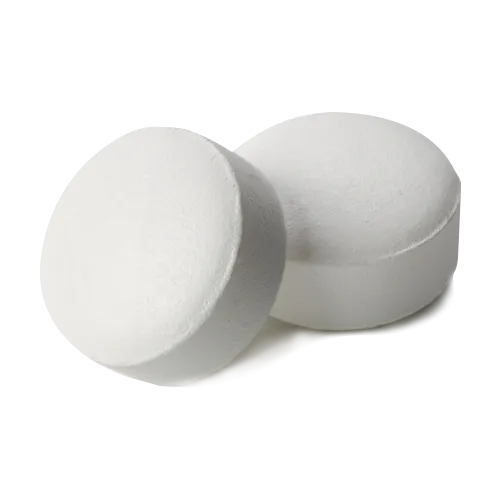Overview
Norvasc, generically known as amlodipine, is a calcium channel blocker used to treat high blood pressure (hypertension) and chest pain (angina). By relaxing blood vessels, it lowers blood pressure and improves blood flow, reducing the risk of strokes, heart attacks, and angina symptoms. It is available in tablet form and typically taken once daily.
History of Development and Approval
Developed by Pfizer, Norvasc was approved by the FDA in 1992 for hypertension and angina. Its long-acting formulation and proven efficacy have made it a widely used medication, supported by extensive clinical research.
Key Benefits
- Blood Pressure Control: Effectively lowers hypertension, reducing cardiovascular risks.
- Angina Relief: Decreases frequency and severity of chest pain episodes.
- Enhanced Exercise Capacity: Improves physical activity tolerance in angina patients.
- Convenient Dosing: Once-daily administration enhances adherence.
Unique Properties
Norvasc’s long half-life ensures sustained blood pressure control and angina prevention with a single daily dose. Its gradual onset minimizes sudden blood pressure drops, enhancing tolerability.
Comparison with Similar Medications
Compared to other calcium channel blockers, Norvasc offers:
- 24-Hour Action: Sustained effect with once-daily dosing, unlike shorter-acting agents.
- Favorable Tolerability: Fewer side effects compared to some antihypertensives.
- Dual Indications: Effective for both hypertension and angina, reducing polypharmacy.
Safety and Tolerability
Norvasc is generally well-tolerated, with common side effects including peripheral edema, dizziness, and flushing. Rare serious effects, such as severe allergic reactions or hypotension, require prompt attention. Regular monitoring ensures safe use.
Indications for Use
Norvasc is indicated for:
- Hypertension: Lowers high blood pressure to reduce stroke and heart attack risk.
- Angina: Manages chronic stable or vasospastic angina to prevent chest pain.
Dosage and Administration
Adults: Hypertension: 5–10 mg/day. Angina: 5–10 mg/day.
Children (6–17 years): Hypertension: 2.5–5 mg/day.
Elderly: Start at 2.5 mg/day, adjust cautiously.
Timing: With/without food, consistent schedule.
Notes: Titrate slowly; monitor for edema or hypotension.
Mechanism of Action
Amlodipine inhibits calcium influx into vascular and cardiac smooth muscle cells, causing vasodilation, reducing blood pressure, and improving coronary blood flow to alleviate angina.
Composition
Active Ingredient: Amlodipine besylate, drives vasodilatory effects.
Inactive Ingredients: Microcrystalline cellulose, dibasic calcium phosphate, sodium starch glycolate for tablet stability.
Side Effects
Common: Peripheral edema, dizziness, flushing, fatigue.
Rare: Palpitations, nausea.
Serious: Severe hypotension, allergic reactions require urgent care.
Prevention of Side Effects
Start with low doses, monitor for edema or dizziness, avoid grapefruit juice. Report severe symptoms promptly.
Contraindications
Avoid in hypersensitivity to amlodipine or severe aortic stenosis.
Warnings and Precautions
Monitor for hypotension, edema, or worsening heart failure. Caution in liver impairment or severe coronary artery disease.
Drug Interactions
CYP3A4 inhibitors (e.g., ketoconazole) increase amlodipine levels; simvastatin increases myopathy risk. Disclose all medications.
Overdose
Symptoms: severe hypotension, reflex tachycardia. Seek emergency care immediately.
Pharmacokinetics
Absorption: Well-absorbed, peak 6–12 hours.
Distribution: Highly protein-bound, widely distributed.
Metabolism: Liver via CYP3A4.
Elimination: Urine (10% unchanged); half-life 30–50 hours.
Dosage Forms
Tablets (2.5, 5, 10 mg) for oral administration.
Pregnancy and Breastfeeding
Use if benefits outweigh risks (Category C); minimal milk excretion, consult provider.
Storage
Store at 20°C–25°C (68°F–77°F), dry, light-protected, away from children. Dispose expired properly.
Clinical Evidence
Trials confirm Norvasc effectively lowers blood pressure and reduces angina frequency, improving exercise tolerance and cardiovascular outcomes.
Conclusion
Norvasc is a reliable, long-acting calcium channel blocker for hypertension and angina, offering sustained control and convenient dosing. Adhere to prescribed regimens, monitor effects, and consult providers for optimal outcomes.




